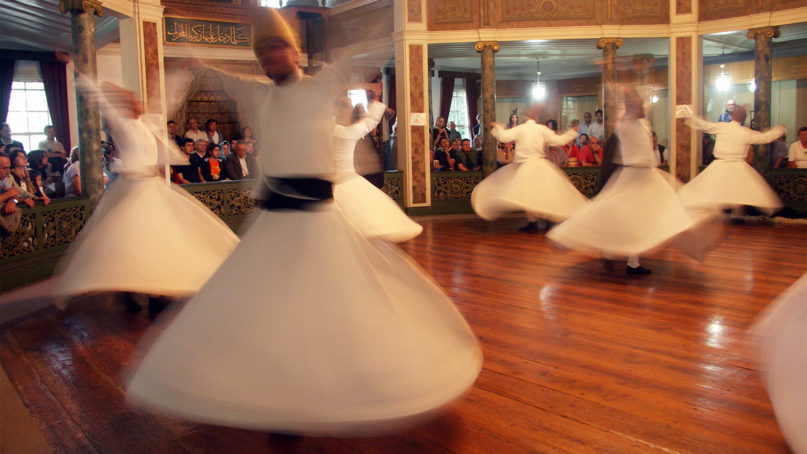(RNS) — For more than a decade, Rizwan Mawani has been living, working and praying with Muslims in 50 different communities across 17 countries. As you’d expect, he has visited plenty of masjids, as mosques are called in Arabic, meaning “a place of prostration.”
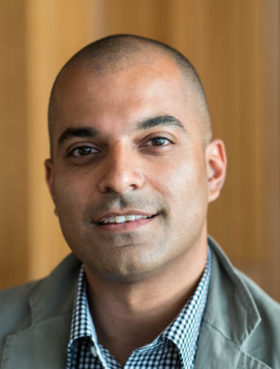
Rizwan Mawani. Courtesy photo
But Mawani, a 45-year-old Canadian scholar and research consultant, whose new book is called “Beyond the Mosque: Diverse Spaces of Muslim Worship,” also spent time in Sufi khanaqas, Shia husayniyyas, Druze khalwas, Ismaili jamatkhanas as well as religious schools known as madrasas and other spaces of Islamic devotion from Canada to China.
Mawani uses these varied sacred spaces as lenses through which to offer readers a primer on the expansive histories, varied architectures and evolving ritual practices of Muslims around the world.
“While the mosque has come to predominate over our architectural assumptions and is often considered as the place of worship for Muslims, a survey of where ritual takes place … demonstrates that there are alternative venues in which Muslims pray,” Mawani wrote in the new book.
Mawani spoke to Religion News Service about how learning about Muslim sacred spaces blurs sectarian boundaries, challenges attempts to define Islam and can help unite the global Muslim ummah, or community. This interview has been edited for length and clarity.
What was your goal with writing this book?
As I began to travel around the Muslim world, I began to realize there was a whole group of spaces, communities and practices excluded from the typical narratives about what it means to be Muslim.
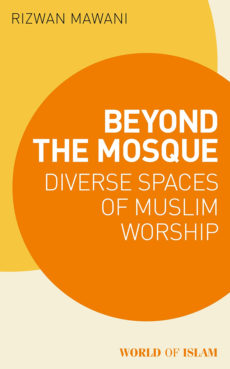
“Beyond the Mosque: Diverse Spaces of Muslim Worship” by Rizwan Mawani. Courtesy image
Even with the mosque itself, we have a particular image both in terms of the architecture — that it has domes and minarets — as well as the rituals and practice that happens within it. I wanted to look at what space told us about what it means to be Muslim, the way in which Muslim communities utilize those spaces for their own practices, and how those spaces communicated to us the values that each community deemed to be important.
So space was an organizing principle for me, but I quickly realized that this had to be combined with ritual. It wasn’t just the building itself that spoke about what it meant to be Muslim, but the people who used that space, the culture that brought that space about.
I started in Lebanon and spent some time in China and Pakistan and other corners of the Muslim world. I wanted to understand how these local cultures influence both Muslim religious architecture and Muslim piety. Nobody has taken a global perspective to say, what does this now look like when we travel geographically or explore Muslim piety across theological lines?
What common characteristics bind these diverse spaces?
I construct a triangle of belief: there’s the belief in Allah, the Quran and the Prophet, regardless of denomination, architecture, rituals and so forth. But how these are expressed differs. One element associated with the masjid is salat, which almost without exception is the predominant ritual of Muslim communities. There are some variations on salat amongst the madhabs (schools of thought), which are sometimes minor and sometimes much more stark.
There’s also the idea of remembrance of God, or dhikr, across these communities. Sometimes it’s expressed internally, as part of one’s personal faith. Other times it’s in a ritual context, in a circle or with people gathering together after Friday prayers. Each community tends to amplify certain aspects of ritual practice based on their own understandings. Among mystical and Sufi communities, we tend to see an emphasis on the collective remembrance of God.
The challenge of writing a book like this is that there are exceptions to almost every universal we try to proclaim upon the Muslim world. I’m always hyper conscious about asking ‘Is this sentence true for all Muslims? And if not, how do I modify it to reflect a pan-Muslim experience?’ One area where I saw that a lot is gender.
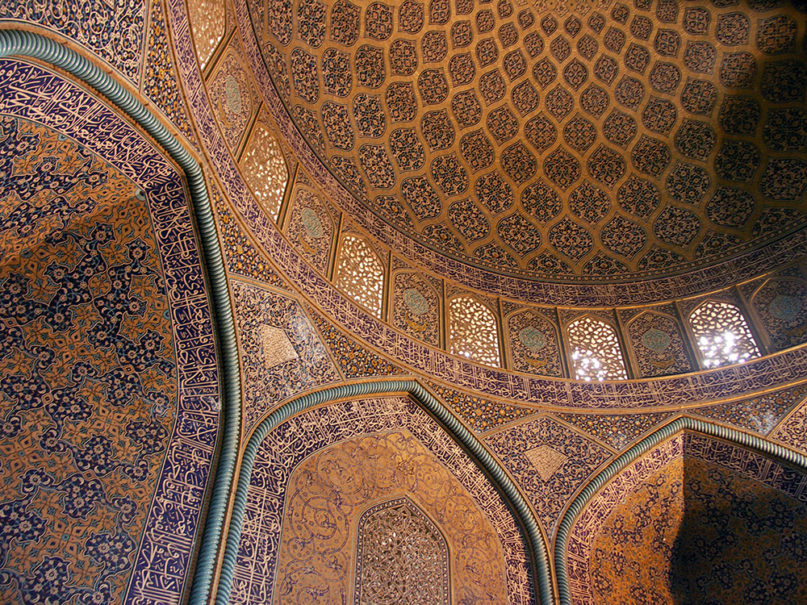
The interior of the Sheikh Lotfollah Mosque in Isfahan, Iran. Courtesy photo
How so?
I was under the impression that in most Muslim countries, women can have the same experience as men in terms of worship. But in a number of countries, that’s not the case. When you look at some of these buildings, there’s a place specifically for women to pray, but today it’s been taken over by men. In some countries, like China and Iran, that’s created an opportunity for women-only prayer spaces where they’re not marginalized. Among people from South Asia who have migrated to the U.S., Canada and Europe, many Muslim women prayed for the first time in public spaces in their adopted countries. Before they were praying at home most often because spaces that existed had been repurposed or taken on a social life that favored men’s piety.
Then there are communities like the Alevis (found mostly in Turkey), who don’t define themselves as Sunni or Shia, where men and women pray side by side in spaces called cemevis, and oftentimes even interspersed with one another. Because in Alevi theology, God doesn’t see the body. All he sees is the soul of the believer, and gender is ultimately dissolved.
You see this in Saudi, too — though I know Saudi authorities are attempting to change this — with the hajj, the most heightened of Islamic rituals. Men and women circumambulate the kaaba together.
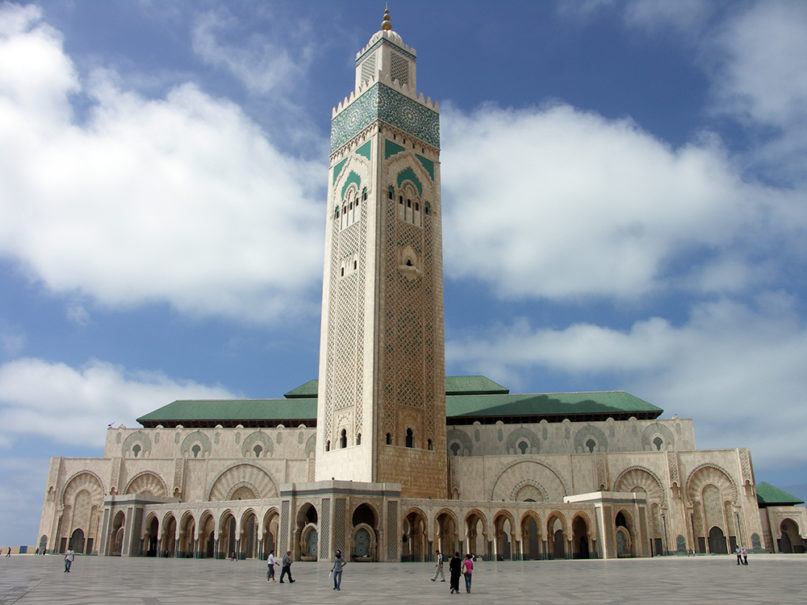
The Hassan II Mosque in Casablanca, Morocco, completed in 1993 is the largest mosque in Africa, with the world’s second tallest minaret. Courtesy photo
How did your exploration dispel some common misconceptions you see about Muslims?
We typically think of the Muslim world as two big blocks, Sunni and Shia. But there are so many communities who feel that those boundaries and labels don’t do justice to their own experience of being Muslim.
So I started working with the Alevis — 25 million people across Turkey and Europe — and Druze — over a million across the Levantine—and other such communities. They’re significant enough in numbers not to ignore, but for various reasons, political or historical or otherwise, they have basically implemented their own spaces of worship and practices. It’s fascinating to me that this was such a blind spot. The Ibadis, who are a community most prominent in Oman, began to develop before the Sunni and the Shia formalized and hardened their own boundaries.

Author Rizwan Mawani, second from left, at the most sacred mosque of the Mouride Sufi tariqa in Touba, Senegal. In the mosque complex can also be found the tomb of the founder of the Mourides, Sheikh Amadou Bamba. Courtesy photo
Another interesting thing to consider is how Islam came into North America. If we look at the earliest migration of Muslim communities, we of course have West African slaves, many of whom we now know practiced Islam. Many of them probably brought a form of Sufi Islam. So though Sunni Islam is the predominant form of Islam in the U.S. today, it’s not necessarily how America got introduced to Islam.
Then we can look at the late 19th and early 20th centuries, and at areas like Dearborn, Michigan, where there are of course large Arab communities. Many of them migrated from the Levantine region, where there would have been Druze and Shia communities. It was the Ahmadi and Nation of Islam communities that first proselytized on American soil. When we think about how the stories of Islam and America become intertwined, we have to realize that this isn’t just a Sunni Muslim story.
Many of us also, rightly or wrongly, still think about Islam as an Arab faith. Looking at global demographics of Muslim communities, one in three Muslims traces their origins to South Asia or lives in South Asia. And when we look at the largest countries in the Middle East that profess Islam, they happen to be Iran and Turkey, cultures that we don’t necessarily think about when we imagine Middle Eastern Islam.
It’s often communities aligned with political power that have had the loudest voices. The earliest Muslim empires can also be thought of as dynasties having their origins in particular cultures. As a result, you see an Arab and predominantly Sunni Muslim hegemony over much of what happens in the early Muslim world. In other empires, like the Buyids or the Fatimids, Shia leaders and caliphs begin to govern the state. Different empires and different dynasties have privileged certain ways of being Muslim.
If you look at Saudi Arabia, you have an alignment with ideals that we often term Wahhabi Islam that are being exported to other countries. One counterexample is Senegal, a country of 12 million Muslims in Western Africa where the predominant interpretation of Islam is a mystical one. But Senegal doesn’t have the political or economic clout that Saudi Arabia does, so we don’t hear about their practices, expression or vision of Islam in the same way.
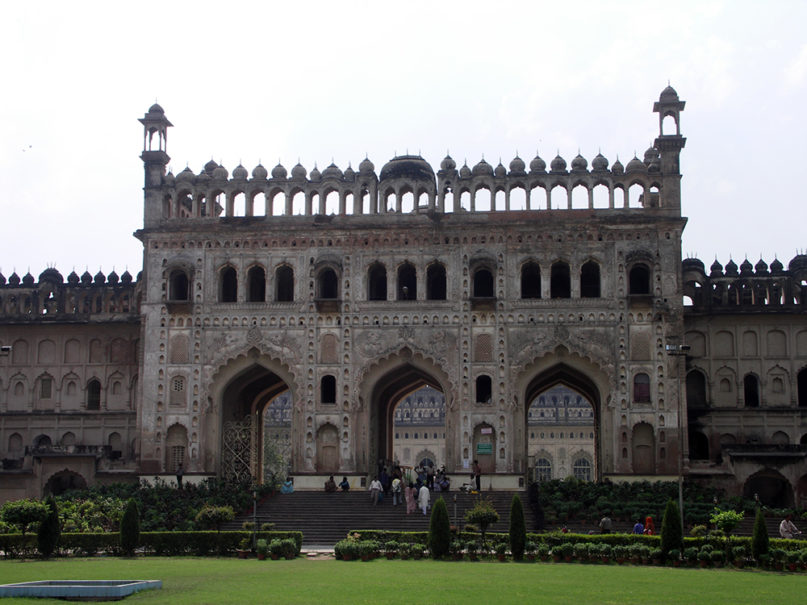
Bara Imambara, Lucknow, India is the largest Shi’a Ithna Ashari prayer space in the world. Completed in 1791, the complex also includes a large mosque, and bhul-bhuliya, a labyrinth with 1024 routes to reach the main hall and a bowli, a step well with running water. Courtesy photo
What does, say, a Sunni Muslim in California stand to gain from exploring different sacred spaces within the broader Islamic tradition?
We all have the same roots of our faith, and for the most part the foundation of who we are is identical. Over time and history there have been influences impacting those beliefs, and the ways those values are expressed can differ from place to place. And you don’t even have to leave America, or even the state of California, to see that.
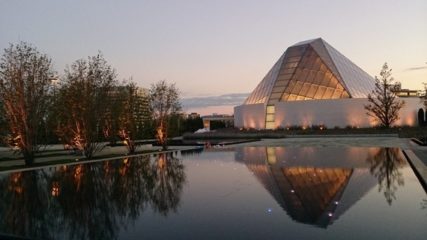
The Ismaili Centre Toronto opened in 2014 and joins other Ismaili Centres in Vancouver, London, Dubai, Dushanbe, Lisbon. The Ismaili Centre Houston, the first in the United States, is under development and will be one of the first Muslim spaces of worship in the United States designed by a female architect. Courtesy photo
As Muslims we oftentimes wave the banner of “The Muslim ummah is very diverse, it represents every culture in the world.” But when we push and ask, “Well, what does that actually mean? What does that diversity look like on the ground?” Many people aren’t able to respond to that question in a meaningful way. Very few Muslims have a broader sense of what it means to be Muslim somewhere else or in a different community. For many of us it’s about coming out of our own skin and realizing there are so many ways to be Muslim.
If you live in a big city, especially, there are lots of opportunities to engage or even work with various Muslim communities. Obviously you can do a Google search and walk through your neighborhood looking for mosques. But you may need to research other names. There are masjids, of course, that are used by Shia communities, but they also have spaces known as an imambara or matam or husayniya or something else, depending upon which part of the world that community comes from. There are many Sufi and mystically inclined spaces in many cities, so searches for words like tekke or zawiya or khanaqah can unearth communities in our own area that we may not be familiar with.
